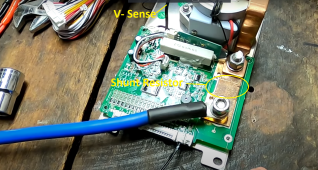burgerking
New Member
I once had a Daly issue: "I had all connections 100% correct, checked many times! This is defective!".
Later I learned I had to disable the temperature sensor from the app.
There are people using this QUCC relay BMS.
I believe this is a config issue unless all 3 defective out of the factory.
Later I learned I had to disable the temperature sensor from the app.
There are people using this QUCC relay BMS.
I believe this is a config issue unless all 3 defective out of the factory.




